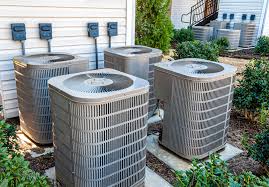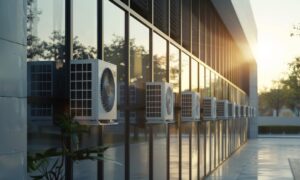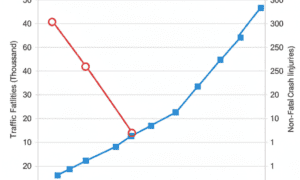Heating, Ventilation, and Air Conditioning (HVAC) systems are integral to modern living, providing comfort, improving air quality, and ensuring energy efficiency in homes, offices, and industrial spaces. A complete HVAC system is a complex network of components working together to regulate temperature, humidity, and air circulation. Whether you’re a homeowner, a business owner, or simply curious about how these systems work, understanding the fundamentals of a complete HVAC system can help you make informed decisions about installation, maintenance, and upgrades.
What is an HVAC System?
HVAC stands for Heating, Ventilation, and Air Conditioning. These systems are designed to control the indoor environment by providing thermal comfort and acceptable air quality. A complete HVAC system includes components for heating, cooling, and air circulation, as well as mechanisms for filtering and humidifying or dehumidifying the air. HVAC tools are essential for the installation, maintenance, and repair of these systems. The system can be centralized, serving an entire building, or decentralized, with individual units for specific zones or rooms.
Key Components of a Complete HVAC System
A complete HVAC system consists of several interconnected components, each playing a critical role in its overall functionality. Below are the primary components:
- Heating System
The heating component of an HVAC system is responsible for generating warmth during colder months. Common heating systems include:
– Furnaces: These burn fuel (natural gas, oil, or propane) to produce heat, which is then distributed through ducts.
– Boilers: Boilers heat water to provide steam or hot water for radiators or radiant floor systems.
– Heat Pumps: These devices transfer heat from the outdoors to the indoors during winter and can also provide cooling in the summer.
- Cooling System
The cooling system removes heat from the indoor air, ensuring a comfortable temperature during warmer months. The most common cooling systems are:
– Air Conditioners: These use refrigerants to absorb heat from indoor air and release it outside.
– Evaporative Coolers: Also known as swamp coolers, these are ideal for dry climates and work by evaporating water to cool the air.
– Chillers: Used in larger commercial systems, chillers cool water, which is then circulated to air handlers or fan coil units.
- Ventilation System
Ventilation is crucial for maintaining indoor air quality by removing stale air and introducing fresh air. Key elements include:
– Air Ducts: These channels distribute conditioned air throughout the building.
– Vents and Registers: These openings allow air to enter and exit rooms.
– Exhaust Fans: These remove contaminants and moisture from areas like kitchens and bathrooms.
– Air Exchangers: These systems bring in fresh outdoor air while expelling indoor air, often with heat recovery to improve energy efficiency.
- Air Filtration and Purification
Air quality is a critical aspect of HVAC systems. Components designed to filter and purify air include:
– Air Filters: These trap dust, pollen, and other particles, preventing them from circulating in the air.
– UV Lights: Ultraviolet lights can kill bacteria, viruses, and mold spores.
– Humidifiers and Dehumidifiers: These devices regulate humidity levels, ensuring comfort and preventing mold growth.
- Thermostat and Control Systems
The thermostat is the brain of the HVAC system, allowing users to set and regulate temperature. Modern systems often include smart thermostats, which can be controlled remotely via smartphones and learn user preferences to optimize energy usage.
- Refrigerant
Refrigerants are chemicals used in air conditioners and heat pumps to absorb and release heat. Proper handling and maintenance of refrigerants are essential for system efficiency and environmental safety.
How a Complete HVAC System Works
A complete trane HVAC units system operates through a cycle of heating, cooling, and ventilation. Here’s a simplified breakdown of the process:
- Thermostat Activation: The user sets the desired temperature on the thermostat. If the room temperature deviates from the set point, the thermostat signals the HVAC system to activate.
- Heating or Cooling: Depending on the season, the system either heats or cools the air. For example, in winter, the furnace or heat pump generates warm air, while in summer, the air conditioner removes heat from the indoor air.
- Air Distribution: The conditioned air is pushed through ducts and distributed to various rooms via vents and registers.
- Ventilation: Stale air is expelled, and fresh air is introduced to maintain air quality.
- Filtration and Purification: Air passes through filters and purification systems to remove contaminants and allergens.
- Cycle Repetition: The system continuously monitors the temperature and repeats the cycle as needed to maintain the desired indoor environment.
Types of HVAC Systems
There are several types of HVAC systems, each suited to different needs and building sizes:
- Split Systems: These are the most common, with separate units for heating and cooling. They are ideal for residential and small commercial spaces.
- Packaged Systems: All components are housed in a single unit, typically installed outdoors. These are often used in smaller buildings or homes with limited indoor space.
- Ductless Mini-Split Systems: These systems provide heating and cooling without ductwork, making them ideal for retrofitting older buildings or adding climate control to specific rooms.
- Geothermal Systems: These use the earth’s stable temperature to heat and cool buildings, offering high energy efficiency but requiring significant upfront investment.
- Hybrid Systems: These combine a heat pump with a furnace, allowing the system to switch between energy sources for optimal efficiency.
Benefits of a Complete HVAC System
Investing in a complete HVAC system offers numerous advantages:
– Comfort: Maintains consistent temperature and humidity levels year-round.
– Energy Efficiency: Modern systems are designed to minimize energy consumption, reducing utility bills.
– Improved Air Quality: Filters and purifiers remove allergens, pollutants, and contaminants.
– Noise Reduction: Advanced systems operate quietly, enhancing indoor comfort.
– Increased Property Value: A well-maintained HVAC system can boost the value of a home or commercial property.
Maintenance Tips for HVAC Systems
Regular maintenance is essential to keep an HVAC system running efficiently and prolong its lifespan. Key maintenance tasks include:
– Changing air filters every 1-3 months.
– Cleaning ducts and vents to prevent blockages.
– Scheduling annual professional inspections and tune-ups.
– Checking refrigerant levels and ensuring there are no leaks.
– Cleaning outdoor units and removing debris.
Conclusion
A complete HVAC system is a vital investment for any building, providing comfort, energy efficiency, and improved air quality. By understanding its components, functionality, and maintenance requirements, you can ensure your system operates at peak performance for years to come. Whether you’re installing a new system or upgrading an existing one, consulting with HVAC professionals can help you choose the right solution tailored to your needs. With proper care and attention, your HVAC system will continue to deliver reliable and efficient climate control, making your indoor environment a haven of comfort and well-being.



































